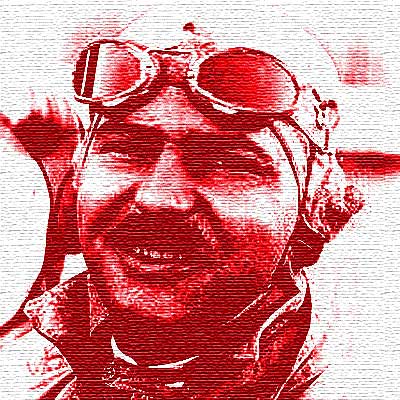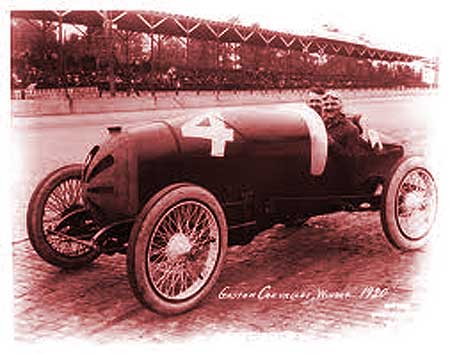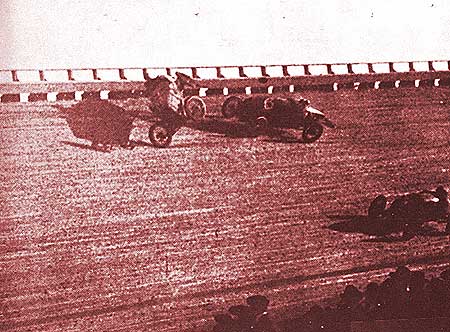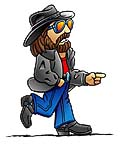Dateline: 11.25.11
All three Chevrolet brothers raced at the Indy 500, but only Gaston Chevrolet won the big race!
 Auto racing has come a very long way in the last 100 years, but it always has been, and probably always will be, a very brutal sport. How could it not be? Part of every race involves tremendous forces at high speeds, so within that context, it’s understandable how sometimes, things can go terribly wrong.
Auto racing has come a very long way in the last 100 years, but it always has been, and probably always will be, a very brutal sport. How could it not be? Part of every race involves tremendous forces at high speeds, so within that context, it’s understandable how sometimes, things can go terribly wrong.
Louis Chevrolet arrived in America in 1901. After working a few years and earning enough money, Louis sent for his younger brothers, Arthur and Gaston. All three Chevrolet brothers were mechanics and has a passion for automobile racing. Middle brother, Arthur, was not only the first of the Chevrolet brothers to race at the Indy 500, but he raced at the very first Indy 500 race in 1911. Although he only completed 30 laps and did not finish the race, Arthur was “there” for the first Indy 500, and would compete in one more Indy 500 race in 1916.
Louis was the next Chevrolet brother to race at the brickyard in 1915 and would compete again in 1916, 1919, and 1920. His best finish was 7th place in 1919 and was the only of his four Indy 500 races that he finished. But it was kid brother Gaston that would ultimately add the name “Chevrolet” to the list of Indy 500 winners. Gaston’s first Indy 500 race was in 1919, finishing the race in 10th place. But it was 1920 when Gaston qualified in 6th place with a speed of 91.550-MPH, held the lead for 14 laps, and won the race.
 The Chevrolet brothers were serious racers. The story of Louis’ Chevrolet Motor Company and William Crappo Durant’s buyout is now legendary. Louis started his car company in 1911 and sold out to Durant by 1915. The following year, Louis, Arthur, and Gaston started the Frontenac Motor Corporation, specifically to design, build, and develop race cars. When Gaston entered his first Indy 500 race in 1919, he was behind the wheel of one of the family business race cars. The following year, the Chevrolet kid brother brought home the Indy 500 gold, driving the latest of the Chevrolet brothers designed race cars.
The Chevrolet brothers were serious racers. The story of Louis’ Chevrolet Motor Company and William Crappo Durant’s buyout is now legendary. Louis started his car company in 1911 and sold out to Durant by 1915. The following year, Louis, Arthur, and Gaston started the Frontenac Motor Corporation, specifically to design, build, and develop race cars. When Gaston entered his first Indy 500 race in 1919, he was behind the wheel of one of the family business race cars. The following year, the Chevrolet kid brother brought home the Indy 500 gold, driving the latest of the Chevrolet brothers designed race cars.
1920 must have seemed like the Chevrolet brother’s year. Much like modern race car builders, such as Greenwood, Pratt & Miller, and others, the Frontenac built customer cars. After his Indy 500 win, Gaston won a 100-mile match race against top racers Tommy Milton, who just happened to be driving a Chevrolet car, and Ralph Mulford. (Milton competed in 8 Indy 500 races and won the event in 1921 and 1923. Mulford competed in the first Indy 500, coming in 2nd place and raced in a total of 10 Indy 500 races)
But it was six months later, on November 25, 1920 in Beverly Hills, California, at a notoriously dangerous board track, that tragedy struck a fatal blow at the Chevrolet family. On the 146th lap of a 200 lap race, Gaston’s car crashed and he was killed.
 Up to that point, it have been a very good year for Frontenac and the Chevrolet brothers. Gaston had racked up enough points that despite his tragic crash, he won the AAA Championship title as “Speed King of the Year.” Gaston had just turned 28 years of age the month before. The following year, Louis and Arthur Chevrolet retired from race car driving. While still connected to automobiles and racing, the surviving brothers did some development work in the 1920s with Arthur applying for a U.S. Patent for his design of an “Overhead Valve Engine” (Patent No. 1,744,526) and was awarded the patent in 1930. But before the patent was awarded, Louis and Arthur got out of the automobile business and started the Chevrolet Brothers Aircraft Company with a new engine of their own design called the, “Chevroletair.” How ironic that 25 years later, Chevrolet would come out with a car that would become one of the ultimate America cars, the “Bel Air.”
Up to that point, it have been a very good year for Frontenac and the Chevrolet brothers. Gaston had racked up enough points that despite his tragic crash, he won the AAA Championship title as “Speed King of the Year.” Gaston had just turned 28 years of age the month before. The following year, Louis and Arthur Chevrolet retired from race car driving. While still connected to automobiles and racing, the surviving brothers did some development work in the 1920s with Arthur applying for a U.S. Patent for his design of an “Overhead Valve Engine” (Patent No. 1,744,526) and was awarded the patent in 1930. But before the patent was awarded, Louis and Arthur got out of the automobile business and started the Chevrolet Brothers Aircraft Company with a new engine of their own design called the, “Chevroletair.” How ironic that 25 years later, Chevrolet would come out with a car that would become one of the ultimate America cars, the “Bel Air.”
In retrospect, it would appear that the Chevrolet brothers’ career peeked in 1920 with Gaston’s Indy 500 win and subsequent 1920 national championship. I’m sure they might have felt that they “had arrived.” But too often, Fate can be cruel and in racing, no matter how many laps a racer completes, one of a thousand things can go wrong in the blink of the eye. – Scott
Related:
Interesting, Little Known, Seldom Talked About, Chevrolet History
Louis Chevrolet: His gift was cars, not corporations
Here’s the BEST way to keep up with K. Scott Teeters’ Corvette blog!


